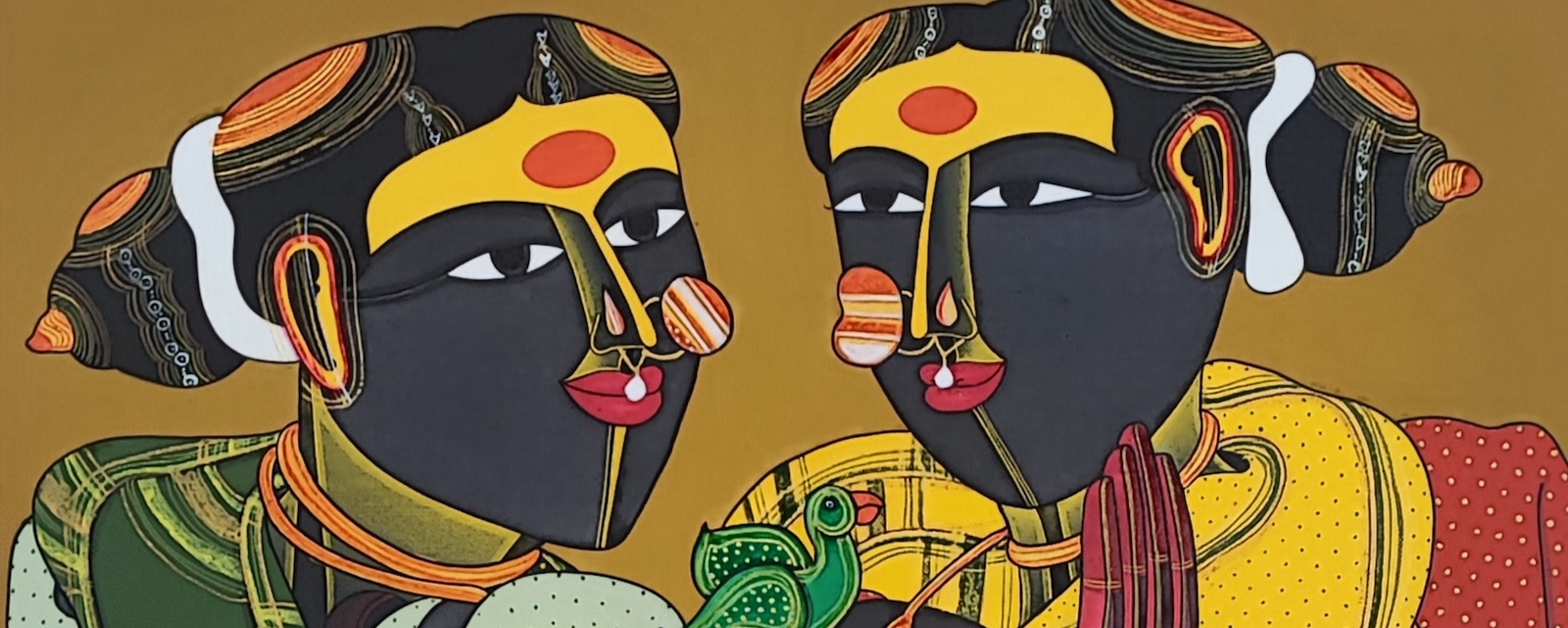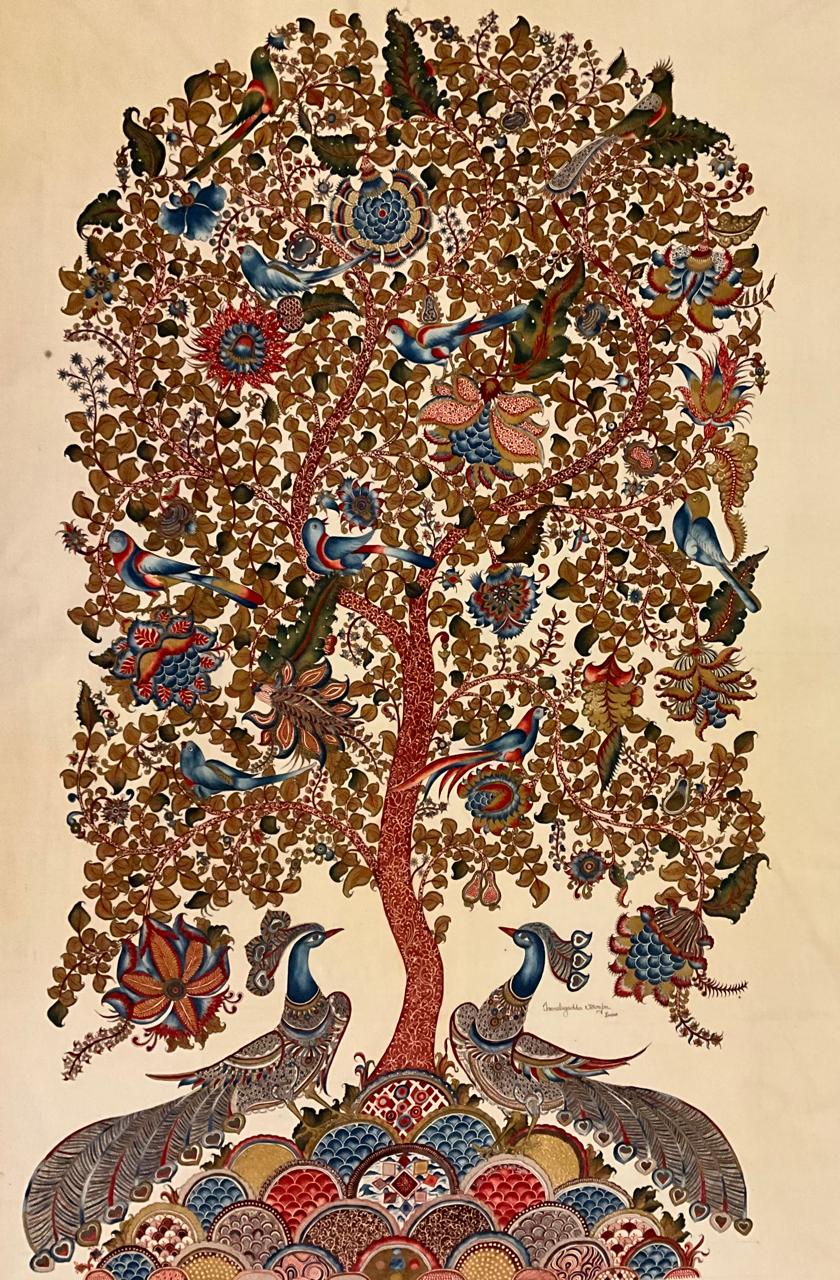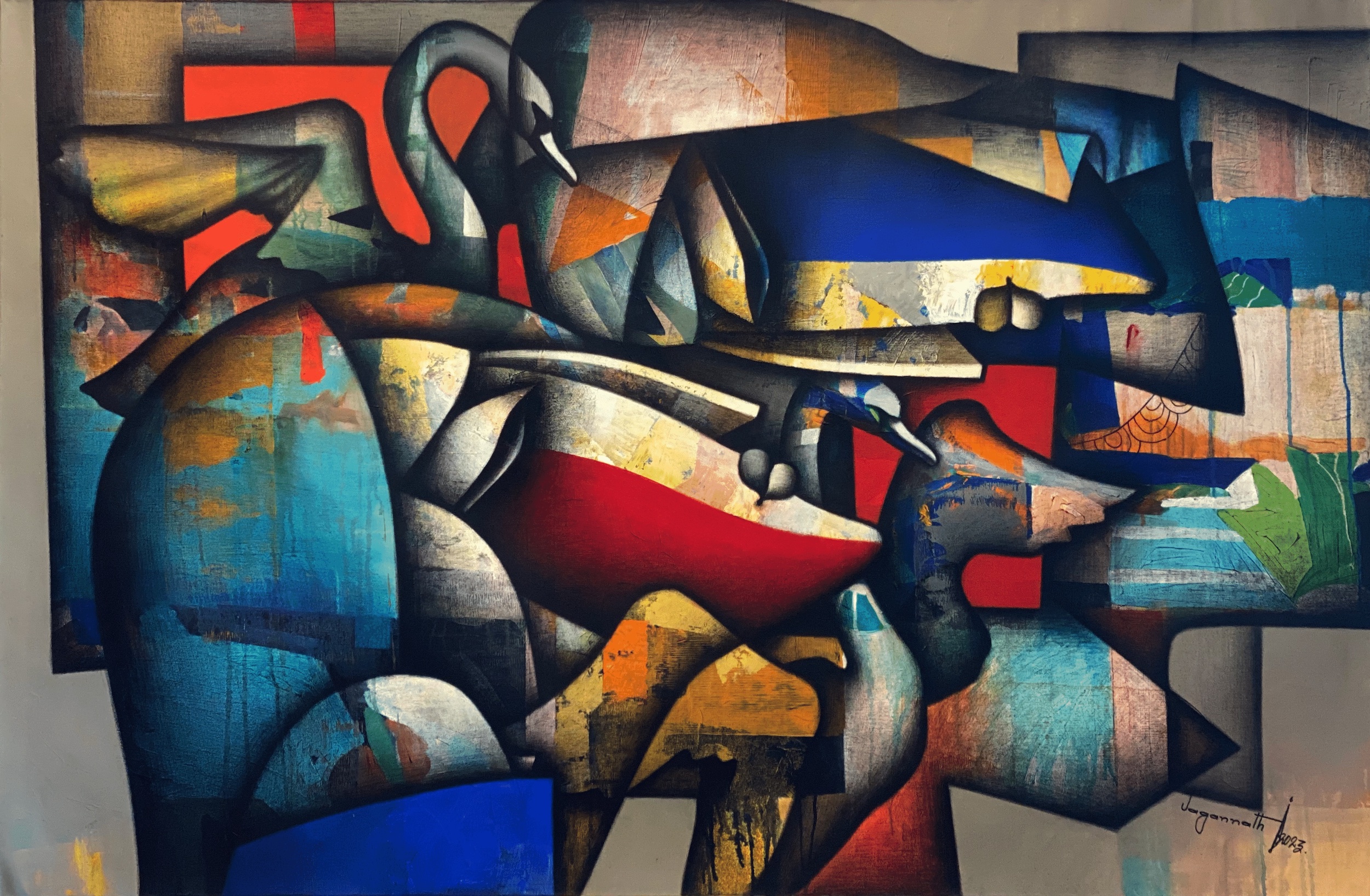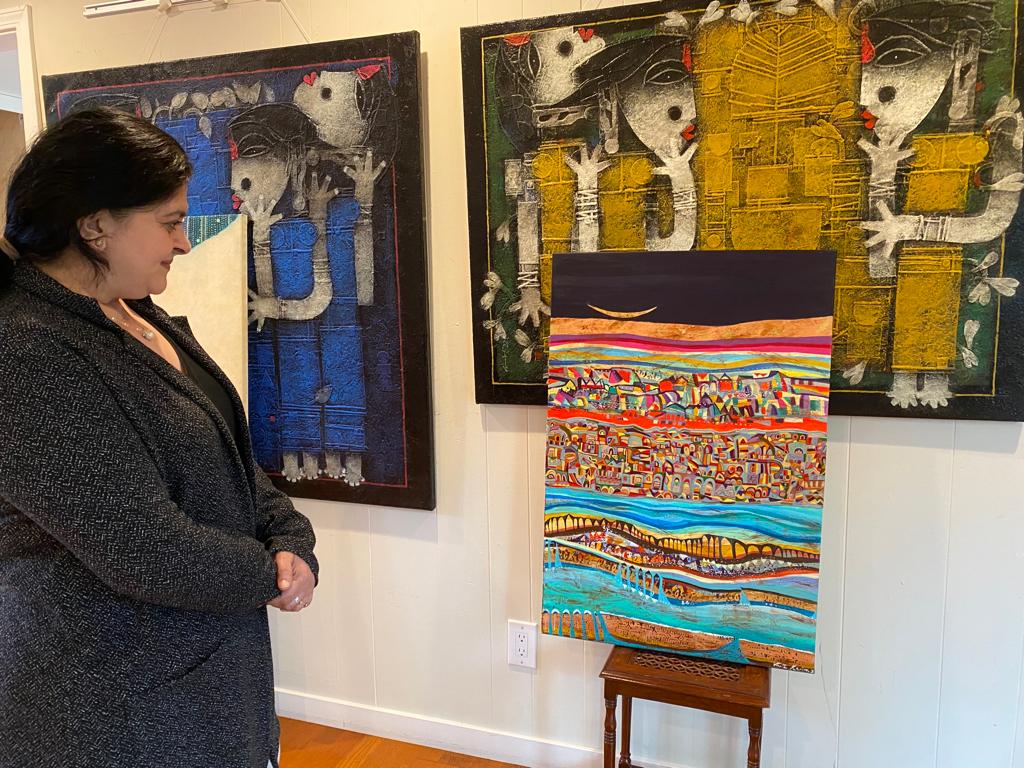
Types of Indian Paintings: How to Describe Indian Art
While there are many ways to categorize an artwork — its style, subject, medium and art historical context — there are essentially 3 types of Indian paintings:
Below, we have put together information on each of these 3 art forms, as well as a guide to the common styles and themes found in Indian art.

Traditional Indian Art
Traditional Indian art, which may also be called folk art or tribal Indian art in some cases, comprises distinct forms of visual art made by specific tribes or regions in India. These art forms are a beautiful expression of the rich culture and history of India, and their techniques have been passed down within families from one generation to the next.
There is no single style of traditional Indian art but rather various art forms developed in different states in India. Many use handmade colors and mineral pigments, and each is a unique craft that draws on Indian iconography and mythologies.
Here are the most popular types of traditional Indian paintings and their origins:
- Kalamkari art from Andhra Pradesh and Gujarat
- Madhubani (Mithila) art from Bihar
- Gond art from Madhya Pradesh
- Pattachitra art from Orissa
- Warli art from Maharashtra
- Phad art from Rajasthan
- Company art from Bengal

Modern Indian Art
The term ‘modern art’ typically refers to art created between the 1880s and the 1960s. Globally, the modern movement responded to an era of rapid technological invention and international exchange, and for Indian artists, the movement also coincided with India’s struggle to achieve Independence from colonial rule and develop a national style.
The noted artist Raja Ravi Varma (1848–1906) is often credited as the “father of modern Indian art.” He combined European painting styles with a proudly Indian sensibility, often depicting Hindu deities and mythological narratives. Today, he is celebrated as one of the nine Navaratnas, or National Art Treasures, who are remembered for their enduring legacies in Indian art and whose artworks can no longer be exported out of India.
The Bengal School of Art continued Varma’s shift away from the style of European painting. Founded by Abanindranath Tagore, this movement embraced the style of indigenous folk art in addition to Indian subject matter. Other notable artists from this era include Gaganendranath Tagore, Nandalal Bose, and Jamini Roy, who are also National Art Treasures.
The Modern Indian Art movement ultimately peaked in the 1950s and 60s. Shortly after Indian Independence, the Bombay Progressive Artists’ Group (PAG) was formed in 1947 to promote an Indian avant-garde on an international level. Although the PAG did not represent a single style, theme or philosophy, its member artists shared the goal of channeling their artistic heritage while engaging with global art movements. The six founding members of the Bombay Progressive Artists’ Group were F.N. Souza, S.H. Raza, K.H. Ara, M.F. Husain, H.A. Gade and S.K. Bakre.

Contemporary Indian Art
Like modern art, the term ‘contemporary art’ also relates to a time period, starting from the 1970s to today — contemporary art refers to artworks produced by living artists or those who may have passed recently.
Contemporary Indian art draws on artistic traditions while pushing new ideas and techniques forward. There is no single style, theme or medium, because contemporary art is an expression of each artist as an individual, rather than a specific tribe or region. Instead, this category encompasses a wide range of mediums, such as painting, sculpture, printmaking, photography, performance, installation and video art.

Styles of Indian Paintings
Within the larger categories of contemporary, modern and traditional Indian art, there are also several styles of painting — which refers to the overall look and feel of painting, or how the subject is depicted.
Here are the most common styles of Indian paintings:
- Figurative/Narrative: Paintings that depict figures and objects in a recognizable and realistic manner, such as Anuradha Thakur’s scenes of tribals and their festivals
- Abstract: Paintings that do not depict recognizable scenes or objects, such as artist S.H. Raza’s purely geometric compositions, or Madhuri Bhaduri’s impressionistic seascapes
- Semi-Abstract: Paintings that depict recognizable figures and objects but in a non-realistic manner, like Basuki Das Gupta’s faces of women or Jagannath Paul’s couples
- Mixed media: Paintings that combine more than one medium, such as Vinita Karim’s paintings made with embroidery and acrylic, or Nishant Dange’s canvases that blend acrylic and charcoal
Themes of Indian Paintings
Just like with styles, Indian paintings vary widely in theme — which refers to the subject matter of a painting, or what is depicted.
Here are some of the most popular themes in Indian paintings:
- Portraits: Paintings that depict people, such as Sujata Achrekar’s paintings of Brahmin Men
- Landscape: Paintings that depict nature or cities, like Sumanto Chowdhury’s scenes of rural villages and rolling hills
- Mythology: Paintings that depict deities or mythological scenes, such as Om Swami’s renderings of Lord Ganesha
- Traditional-meets-Contemporary: Paintings that combine aspects of traditional Indian art forms and contemporary techniques, such as Ramesh Gorjala’s canvases that depict gods and goddesses with elements of Kalamkari art
We hope these terms help you navigate the different types of Indian paintings for sale. If you would like to work directly with an art consultant to better understand your options, Laasya Art offers art advisory services — please reach out at info@laasyaart.com or +1 650-770-9088 for more information.
— Sonia Patwardhan

Leave a Reply
You must be logged in to post a comment.